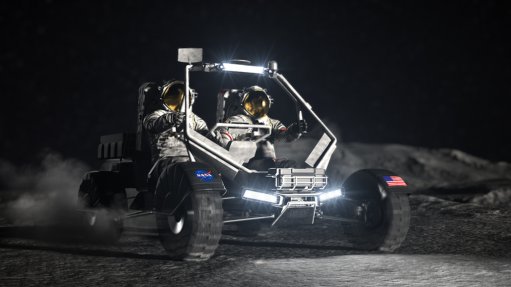
A proposed LTV for the Artemis moon missions
The US’s National Aeronautics and Space Administration (Nasa) says it is seeking industry proposals for a next-generation lunar terrain vehicle (LTV).
The vehicle will have to allow astronauts to explore the south polar region of the moon during the upcoming Artemis missions.
It is believed that driving will enable astronauts to sample more of the lunar surface than they could manage on foot.
Nasa says it aims to contract LTV-as-a-service from industry, rather than owning the rover.
“Contracting services from industry partners allows Nasa to leverage commercial innovation and provide the best value to US taxpayers, while achieving its human spaceflight scientific and exploration goals,” notes the agency.
“We want to leverage industry’s knowledge and innovation, combined with Nasa’s history of successfully operating rovers, to make the best possible surface rover for our astronaut crews and scientific researchers,” says Nasa Extravehicular Activity and Human Surface Mobility Programme manager Lara Kearney.
The LTV will have to function like a cross between an Apollo-style lunar rover and a Mars-style uncrewed rover.
This means it will have to support phases driven by astronauts and phases as an uncrewed mobile science exploration platform, similar to Nasa’s Curiosity and Perseverance Mars rovers.
This will enable continued performance of science, even when crews are not present on the lunar surface.
Engineers will also have to be able to operate the LTV remotely to transport cargo and scientific payloads between crewed landing sites, enabling additional science returns, resource prospecting and lunar exploration.
To handle the unique environment near the lunar South Pole, which includes permanently shadowed regions and extended periods without sunlight, the LTV will need to incorporate several systems to support both these crewed and uncrewed operations.
Some of the more critical systems include advanced power management, semi-autonomous driving, state-of-the-art communication and navigation systems, and protection from an extreme environment.
Each rover must be able to carry two suited astronauts, accommodate a robotic arm or mechanism to support science exploration, and survive the extreme temperatures at the lunar South Pole.
Nasa says it intends to use the LTV for crewed operations beginning with Artemis V in 2029.
Prior to crew arrival, the rover will be used for uncrewed and commercial activities once it lands on the lunar surface.